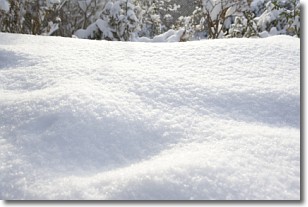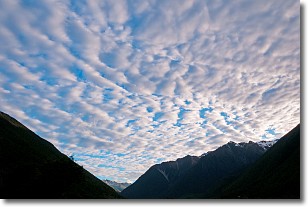Weather Alert in Alaska
Flood Watch issued July 20 at 9:14AM AKDT until July 23 at 4:00PM AKDT by NWS Juneau AK
AREAS AFFECTED: Haines Borough and Klukwan
DESCRIPTION: Warm temperatures are expected in the Chilkat Valley Sunday afternoon through Tuesday that will increase melt water runoff from area glaciers into the Chilkat River system. * WHAT...Flooding caused by snowmelt continues to be possible. * WHERE...The following areas, Chilkat, and Klehini Rivers Near Haines * WHEN...From late Monday night through Wednesday afternoon. * IMPACTS...Rivers may rise out of their banks possibly causing minor flooding of low lying areas near the rivers, especially near Klukwan. * ADDITIONAL DETAILS... - Warm temperatures are expected to occur in the northern panhandle starting Sunday afternoon and last into early next week. This is expected to increase runoff from the melting of glacier ice and any remaining snow in the higher elevations. This increased melt water runoff may cause area rivers to reach minor flood stage possibly as early as late Monday night now. Area rivers could then remain above minor flood stage into Wednesday morning.
INSTRUCTION: Stay tuned to further developments by listening to your local radio, television, or NOAA Weather Radio for further information.
Want more detail? Get the Complete 7 Day and Night Detailed Forecast!
Current U.S. National Radar--Current
The Current National Weather Radar is shown below with a UTC Time (subtract 5 hours from UTC to get Eastern Time).

National Weather Forecast--Current
The Current National Weather Forecast and National Weather Map are shown below.

National Weather Forecast for Tomorrow
Tomorrow National Weather Forecast and Tomorrow National Weather Map are show below.

North America Water Vapor (Moisture)
This map shows recent moisture content over North America. Bright and colored areas show high moisture (ie, clouds); brown indicates very little moisture present; black indicates no moisture.

Weather Topic: What is Snow?
Home - Education - Precipitation - Snow
 Next Topic: Stratocumulus Clouds
Next Topic: Stratocumulus Clouds
Snow is precipitation taking the form of ice crystals. Each ice crystal, or snowflake,
has unique characteristics, but all of them grow in a hexagonal structure.
Snowfall can last for sustained periods of time and result in significant buildup
of snow on the ground.
On the earth's surface, snow starts out light and powdery, but as it begins to melt
it tends to become more granular, producing small bits of ice which have the consistency of
sand. After several cycles of melting and freezing, snow can become very dense
and ice-like, commonly known as snow pack.
Next Topic: Stratocumulus Clouds
Weather Topic: What are Stratus Clouds?
Home - Education - Cloud Types - Stratus Clouds
 Next Topic: Wall Clouds
Next Topic: Wall Clouds
Stratus clouds are similar to altostratus clouds, but form at a
lower altitude and are identified by their fog-like appearance, lacking the
distinguishing features of most clouds.
Stratus clouds are wider than most clouds, and their base has a smooth, uniform
look which is lighter in color than a nimbostratus cloud.
The presence of a stratus cloud indicates the possibility of minor precipitation,
such as drizzle, but heavier precipitation does not typically arrive in the form
of a stratus cloud.
Next Topic: Wall Clouds
Current conditions powered by WeatherAPI.com




